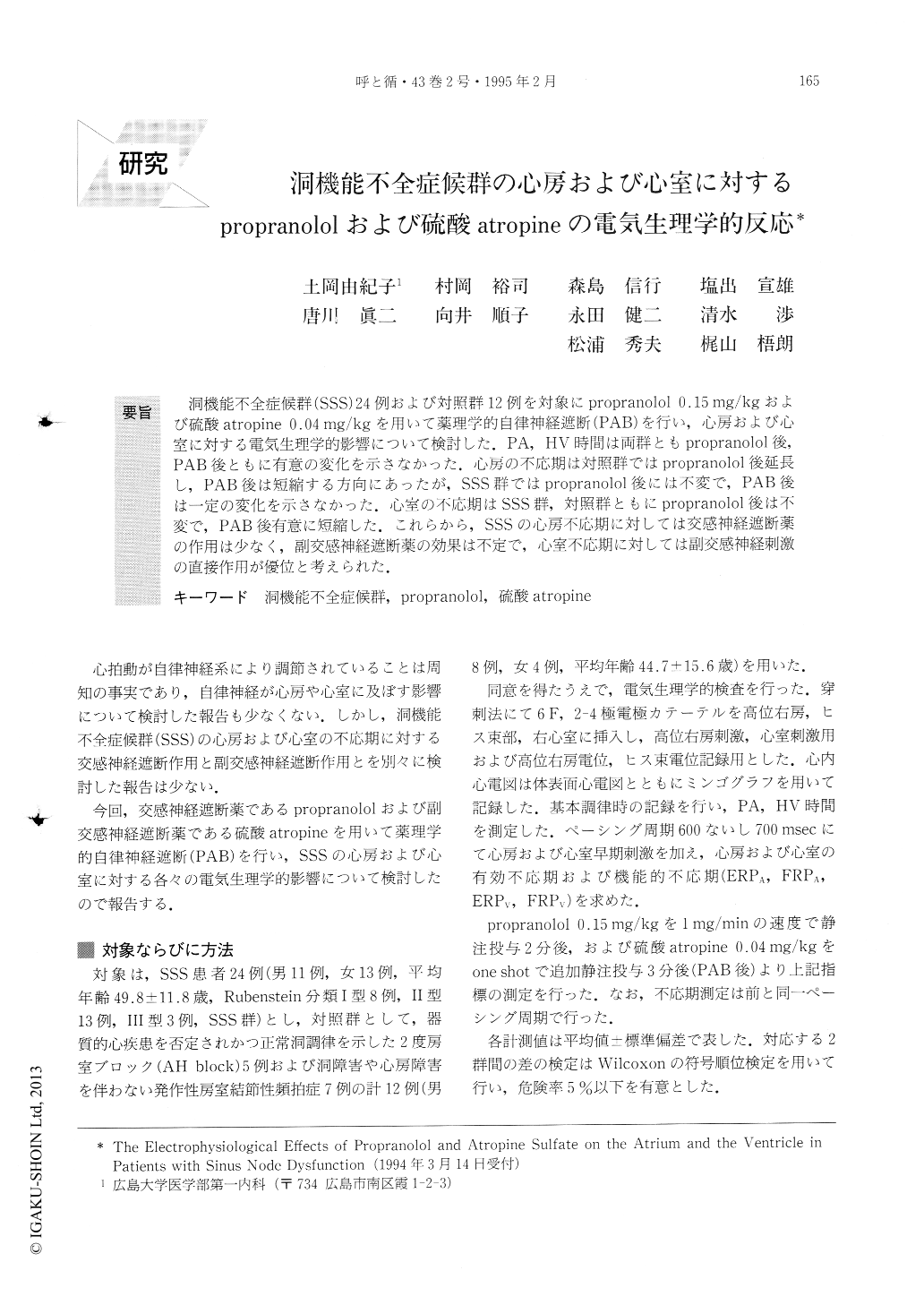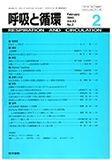Japanese
English
- 有料閲覧
- Abstract 文献概要
- 1ページ目 Look Inside
洞機能不全症候群(SSS)24例および対照群12例を対象にpropranolol 0.15mg/kgおよび硫酸atropine O.04 mg/kgを用いて薬理学的自律神経遮断(PAB)を行い,心房および心室に対する電気生理学的影響について検討した.PA,HV時間は両群ともpropranolol後,PAB後ともに有意の変化を示さなかった.心房の不応期は対照群ではpropranolol後延長し,PAB後は短縮する方向にあったが,SSS群ではpropranolol後には不変で,PAB後は一定の変化を示さなかった.心室の不応期はSSS群,対照群ともにpropranolol後は不変で,PAB後有意に短縮した.これらから,SSSの心房不応期に対しては交感神経遮断薬の作用は少なく,副交感神経遮断薬の効果は不定で,心室不応期に対しては副交感神経刺激の直接作用が優位と考えられた.
Electrophysiological studies were performed in 24 patients with sick sinus syndrome (SSS) and 12 controls before and after pharmacologic autonomic blockade (PAB) with propranolol (0.15 mg/kg) and following atropine sulphate (0.04 mg/kg). Heart rate decreased significantly after propranolol and increased after PAB. PA and HV intervals did not change after propranolol and PAB. The refractory period of the atrium tended to lengthen after propranolol and to shorten after PAB in the control group. However, in the SSS group, it did not change after propranolol, and it increased in some patients and decreased in the other patients after PAB. The refractory period of the ventricle lengthened after propranolol and shortened after PAB in both groups. The sympathetic blocking effect is little and the para-sympathetic blocking effect is variable for the refrac-tory period of the atrium, but the parasympathetic effect is dominant in the refractory period of the ventri-cle.

Copyright © 1995, Igaku-Shoin Ltd. All rights reserved.


